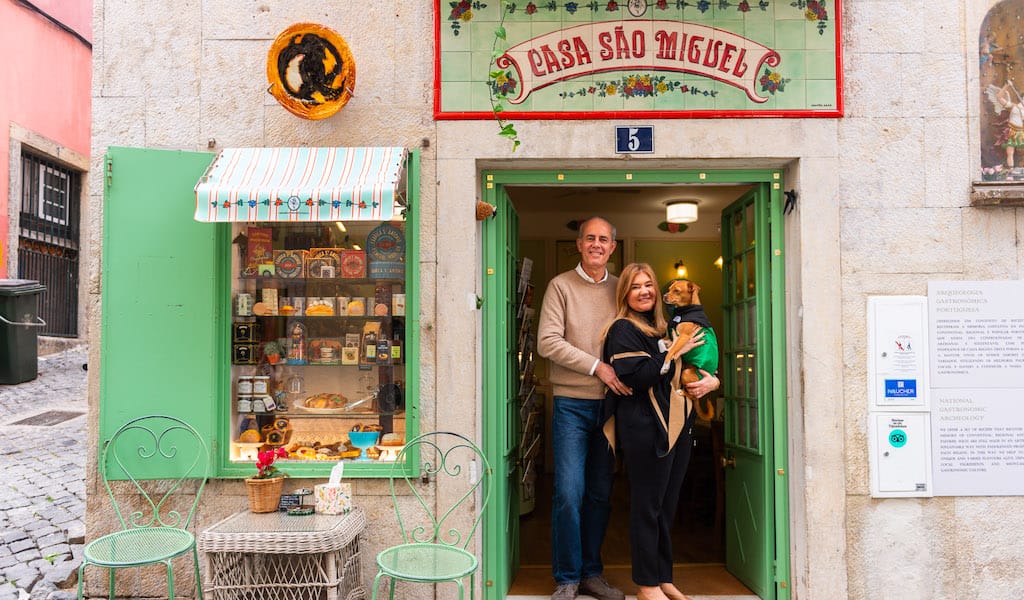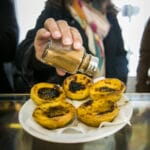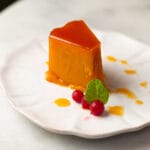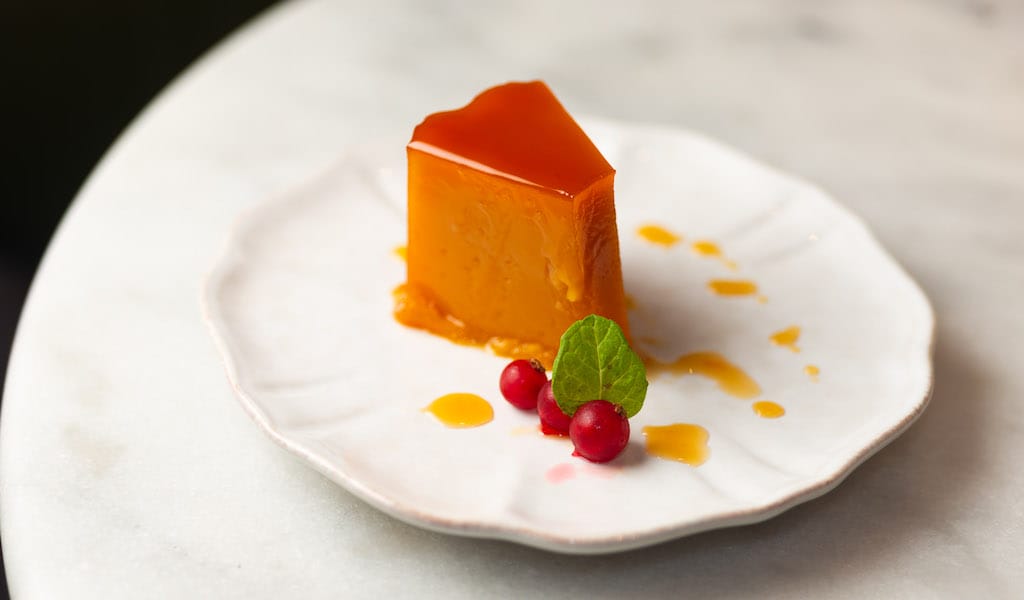Those pastry shops that seem to command just about every corner in Lisbon? They’re an important institution in the city, as well as an utterly delicious way to start the day. But the truth is, these days, the range of pastries sold in Lisbon is limited and many of those sweets are produced on an industrial or semi-industrial level.
Leonor Oliveira and Pedro Nunes wanted to create a pastry shop that went in the opposite direction.
“We call it ‘National Gastronomic Archeology,’” says Pedro, describing the impetus behind Casa São Miguel, the pastry shop and café he runs with his wife.
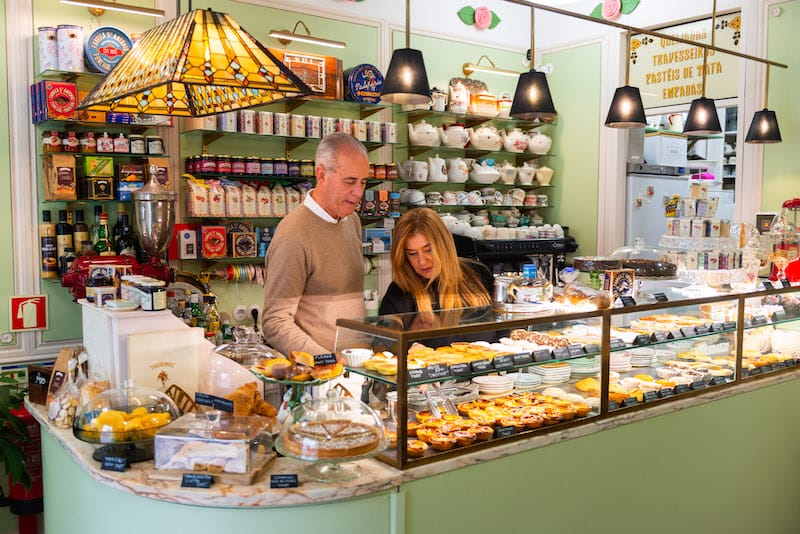
Located in Lisbon’s Alfama district, the tiny cafe is something of a living museum of Portuguese pastries. Although the space, a former souvenir shop, was completely renovated in 2019, it has a distinctly Art Nouveau feel via a mint green paint job, touches of stained glass, antique furniture, doilies, china and other grandma-like touches. Yet the centerpiece of Casa São Miguel is undoubtedly its glass case filled with around 30 different pastries and sweets.
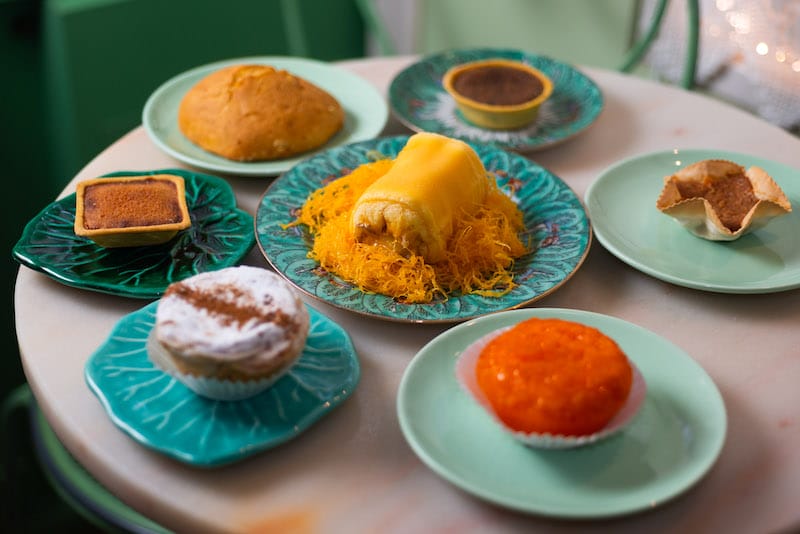
“Normally, regional pastries are forgotten in the capital,” Pedro tells me as we scan the case, which holds an almost jewel box-like variety of tiny tarts, cookie-like sweets, golden mounds, slices of pie, paper-wrapped mysteries and even a few savory pastries from across the country.
The sweet that takes up the most real estate is, perhaps unsurprisingly, the pastel de nata, Lisbon’s ubiquitous custard tart. Yet compared to the commonly found semi-industrial versions, those at Casa São Miguel are less sweet, made using the couple’s own recipe which also includes a relatively hearty pastry crust, and are baked every morning in-house.
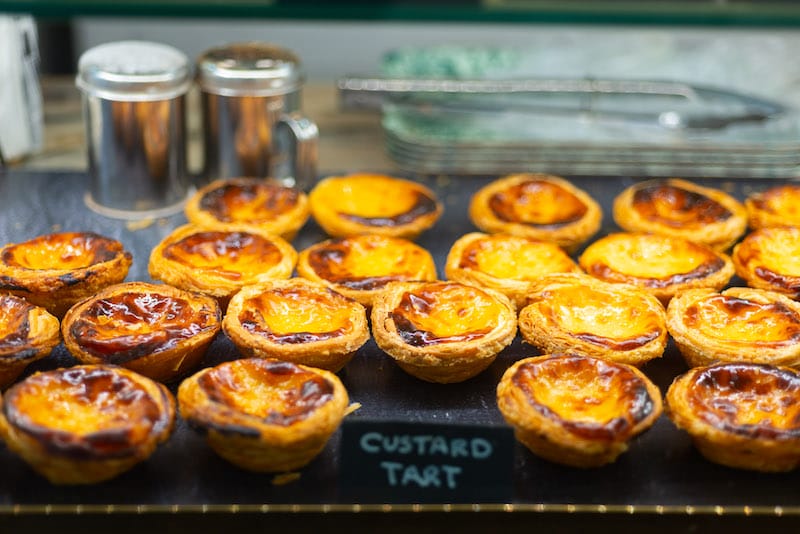
“A lot of people go straight for the pastel de nata, but we try to steer them to other things,” Pedro tells us.
We ask him to point out some of the more obscure options and he directs us to a small, round tart filled with carob, an important ingredient in traditional sweets in the Algarve, in Portugal’s south; a square tart from Caldas da Rainha filled with a sweetened chickpea mixture – “We’re the only ones in Lisbon who have these,” he says – a pastry named for Rafael Bordalo Pinheiro, one of Portugal’s greatest artists; and a palm-sized, rather dry looking cookie, the name translated as “Economical Biscuit,” formerly made by shepherds in Portugal’s far north.
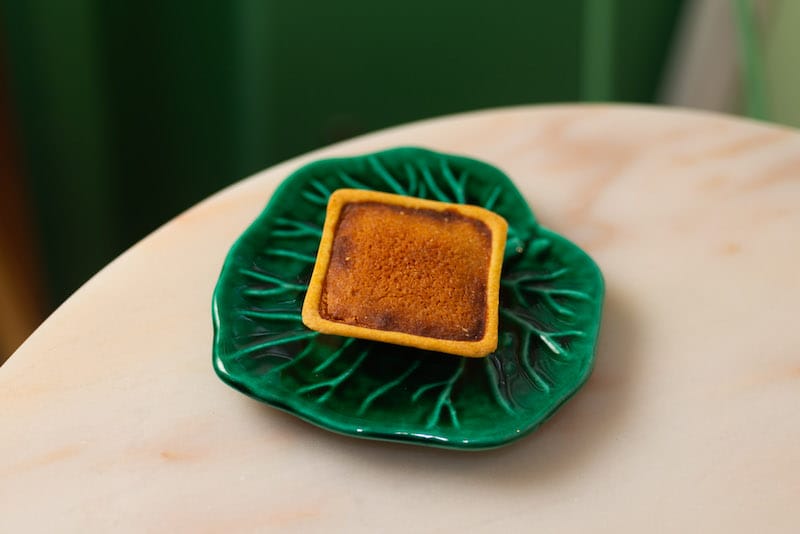
“We don’t have enough space for them all, so we have them on rotation,” Pedro explains, which means from week to week, a visit to Casa São Miguel can be a different experience.
“We think there is no other shop in Portugal that has this selection of pastries from north to south,” Leonor adds.
Leonor worked corporate jobs for more than 30 years, which took her to just about every corner of Portugal, exposing her to the country’s vast scope of sweets. A “natural investigator” in Pedro’s words, she does research in books and she also takes advantage of Lisbon’s regional associations, spaces where people meet to cook and share recipes from their ancestral homelands, to learn about and source obscure sweets. She tells us that, as many of the pastries are made by small producers in remote corners of the country, some arrive at the shop via a bus ride in a box “on someone’s knee.”
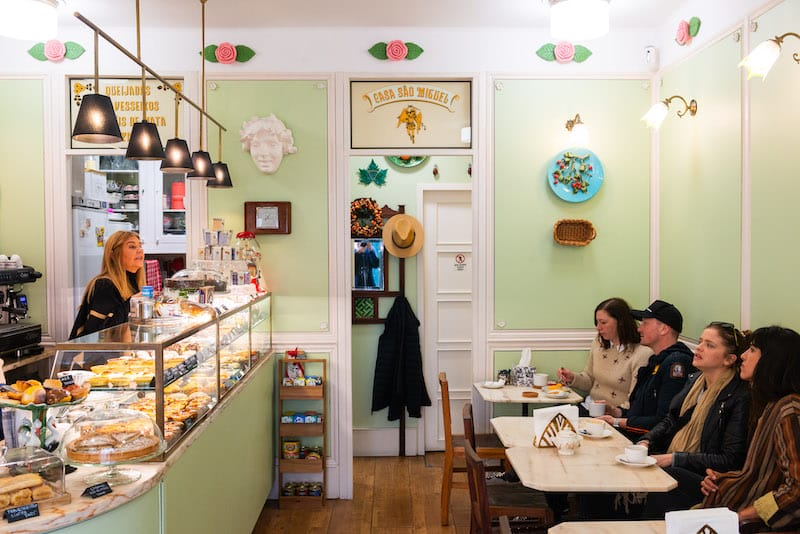
“I’m not so interested in conventual sweets, which are mostly egg yolks and sugar,” she tells us, of what are arguably Portugal’s most famous sweets, explaining that the expansion of convents led to these ingredients having become commonplace across the country. “I want to feature sweets that highlight the indigenous ingredients from each region.”
Indeed, the menu at Casa São Miguel is organized by region, and currently spans four pages. When we stopped by, Leonor was in the process of updating that document, which, at this point, is more of an informal encyclopedia of regional Portuguese pastries. She also has plans to write a book about the topic, the draft of which already spans 80 pages.
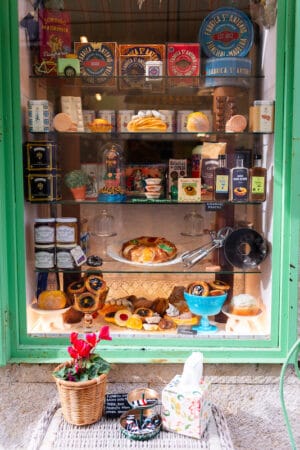
Customers can pair their selection with coffee, tea or a vast selection of Portuguese tisanes, all of which are served in antique china – another of Leonor’s interests. The couple have also commissioned their own line of jams, and a few other sweet-leaning food items are available for sale as well.
We ask Leonor if traditional Portuguese pastry making is a disappearing art and she replies, “I think it’s the opposite.” She tells us that she feels that local governments have done a good job creating and promoting local gastronomy; in particular, sweets. This has led to new recipes being invented all the time, and Leonor and Pedro are happy to stock those as well; that baked homage to Rafael Bordalo Pinheiro, for example, only dates back to 2017.
Yet these subtle differences in region and era might be lost on Casa São Miguel’s customers, 99 percent of whom, Leonor and Pedro estimate, are visitors from outside of Portugal. “I hope that this project draws more Portuguese people,” says Leonor. A location in the heart of Alfama means lots of foreign tourist foot traffic, and it doesn’t hurt that the shop is utterly Instagramable. To accommodate this, the couple generally label the sweets in English by main ingredient or place rather than by name. Pedro also speaks English fluently, and is happy to walk customers through the options – no matter where they’re from.
Austin BushAustin Bush
Published on March 25, 2024
Related stories
April 9, 2024
PortoMore than a food staple, the rissol is also a symbol of the popular culture in Portugal, where locals eat it standing at counters, always paired with a cup of coffee – or a glass of tap beer from eleven o'clock onwards. Rissóis (plural) are half-moon-shaped savory pastries of peasant origins, and from grandmothers' houses…
April 4, 2024
LisbonQuick Bite: On this food tour in Lisbon, we’ll experience a cultural feast, tasting some of the most diverse bites of the city’s gastronomy and meeting the people behind them. The oldest city in Western Europe, once the hub of a trading empire that connected Macau in the east to Rio de Janeiro in the…
January 4, 2024
Lisbon“It’s the king of Portuguese gastronomy,” declares Miguel Oliveira. He’s describing pudim Abade de Priscos, one of Portugal’s most infamous desserts, and the dish that is the specialty of his Lisbon sweets shop. Allegedly invented by the eponymous abbot in the 19th century (pudim is a term that refers to a variety of steamed desserts…







































